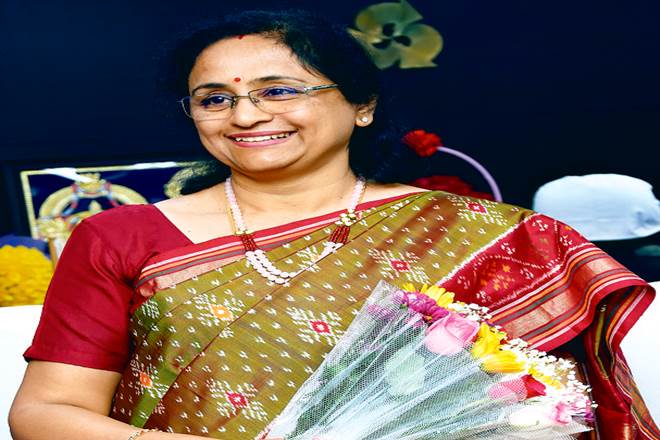Indian Bank has adopted a two-pronged strategy of a sustained focus on CASA and core term deposit growth and is betting on diversification of its loan portfolio with greater exposure to the RAM (retail, agriculture and MSME) sector, Padmaja Chunduru, MD & CEO, tells Sajan C Kumar. Excerpts:
The bank faced challenges in scaling up profitability in the first three quarters of FY19. By when do you expect to change this scenario?
Profitability has been impacted in the last few quarters owing to factors like hardening of bond yields and IL&FS exposure. Some high-value accounts which had been referred to the NCLT are expected to get resolved soon. There are also indications of softening of market yields.
With our renewed focus on quality RAM sector assets, impetus to CASA deposit growth and efforts for cost control, we expect growth in profitability in the coming quarters.
How do you plan to steer the bank into a growth trajectory? What are the major challenges you face?
In the nine months ended December, 2018, Indian Bank achieved net business growth of close to 9% with both deposits and net advances contributing in almost equal measure. To add momentum to this trajectory, we have adopted a two-pronged strategy of a sustained focus on CASA and core term deposit growth and are also diversifying our loan portfolio with higher quality exposure to the RAM sector. We are adding competitive features to the current account and savings bank deposit schemes, keeping in mind different categories of customers. On the assets side, while our home loan rates are comparable with the best in the industry, we are exploring ways to improve the features of retail loan products. We are ramping up supply and chain financing for MSMEs. With ‘quality’ being at the core of our business mantra, we will tap opportunities with well-informed underwriting
decisions.
What additional measures do you plan for speedy recovery of NPAs?
We are pursuing a multi-pronged strategy for NPAs by quickening the pace of recovery and preventing slippage in asset quality. Among the measures we have taken for the purpose are setting up of Stressed Asset Management (SAM) branches at all important centres, timely action through the SARFAESI mode, effective engagement of Recovery Agents, online tracking of OTS proposals, active participation in Lok Adalats, holding of mega e-auctions, and sale of assets to ARCs. In fact, the prospects for some large NPAs being resolved are bright. We had recovered about `838 crore through the NCLT up to Q3 FY19 and recovery of over Rs 600 crore is expected from NCLT-referred accounts in Q4.
What would your lending strategy be? While your RAM book is currently at 57.8% and corporate at 40%, is there a scope for the corporate pie being reduced further?
I would look at credit growth that is dispersed across agriculture, retail, MSME and corporate sectors. However, the bulk of lending would happen in sectors in which the outlook is good, the rating of the borrower high and the bank understands the business. There is no need to pare down the corporate book; in fact, we would like to expand the base by covering more industries and sectors, achieving risk diversification. The RAM book would optimally be at around 60%.
READ ALSO | Embassy Office Parks REIT IPO sees tepid demand, subscribed 12% on Day 1 so far
What do you make of the prevailing interest regime vis-a-vis the recent rate cut by the RBI?
The MPC’s decision to cut the policy repo rate was driven by inflation being range-bound and expectations of growth in private CAPEX and consumption. It is expected that the global slowdown led by China and European Union will soften crude prices, creating a context for further rate cuts. After taking into account various factors, our bank will soon take a call on MCLR revision. Significantly, the upward move of policy rates twice after June, 2018 saw us revising MCLR in a staggered manner over six months, even as the rate hike was not passed on to customers fully.
What are your expectations from FY20?
Given the growth prospects and the easing of liquidity conditions, we would ideally be looking at credit growth of 13-14% in FY20. With expected deposit growth of 10–12%, our CD ratio may improve further to 78–80%.
The bank’s digital channels are growing significantly. Are you looking to offer GenNext products to customers?
Keeping in mind millennials, we offer mobile apps studded with the best of features, tie-ups with online merchants, loyalty points and enhanced net banking facility. We are in the process of implementing certain technologies/solutions that would enhance customer satisfaction. These include artificial intelligence-enabled chatbot on the website to address customer queries, data analytics to enable right positioning of products, and upscaling of our alternate delivery channels like internet banking and mobile banking.
How is your current capital adequacy ratio (CRAR)? Any plan to raise capital?
The bank, with a CRAR of 12.67% as of December 31, 2018, is well-capitalised. With government holding at 81.73%, there is also sufficient headroom to raise capital from the market. We have approval from the board of directors, as well as shareholders to raise capital of up to Rs 7,000 crore.
How is your CASA position? What plans do you have to enhance it?
We registered growth of 7% in CASA deposits at the end of Q3. As term deposits have grown ahead of CASA deposits, the share of CASA in total deposits has come down slightly. The focus is on mobilising low-cost deposits and entering into new business relationships. We are also looking to introduce sector-specific products for women, senior citizens, etc. Government accounts is another area where we are making significant progress.
What are the plans on network expansion?
Branch opening has been an ongoing exercise for the bank. However, with the bottomline being of paramount importance, such proposals would be weighed in terms of the potential to break even early and be a profitable proposition.

